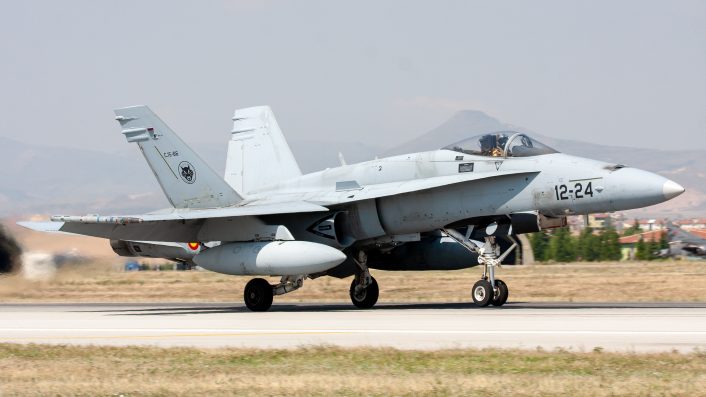Despite the need to modernize, Spain shelves F-35 plans, leaving its Navy without a STOVL replacement.
The purchase of F-35 Lightning II aircraft, the fifth-generation American stealth fighter, for the Spanish Armed Forces has been definitively shelved, according to a report published by the Spanish newspaper El País, citing government sources.
Preliminary contacts that had already begun have been suspended indefinitely. Although the government approved a 10.471 billion Euro plan last April and has committed to spending 2% of its gross domestic product (GDP) on security and defense, the decision to invest 85% of these funds in Europe is considered incompatible with acquiring an American aircraft.
Earlier this year, Prime Minister Pedro Sánchez reaffirmed the goal of moving defense outlays toward 2% of GDP in line with NATO guidance, then declined to push spending to 5% at a June summit. That stance drew sharp criticism from U.S. President Donald Trump, who threatened extra tariffs on Spanish goods. Spain’s Defense Ministry and Lockheed Martin did not immediately comment on the report.
Spain’s defense ministry never moved beyond a non-binding RFI (Request For Information) for the Lightning II. The 2023 budget even penciled in 6.25 billion Euro for “replacement aircraft for the AV-8B and C-15M, phase 2” (in other words, the Navy’s Harriers and the Air Force’s remaining F-18 Hornets). Looks like those plans are now scrapped.

That leaves the Armada (Navy) in a corner. The AV-8Bs are expected to be retired by 2030, and extending their service is no longer realistic: the aircraft are aging, and with both the USMC and Italian Navy phasing theirs out (and replacing them with the F-35B), Spain would be left as the only operator, facing a vanishing spares market. The only viable STOVL replacement is the F-35B. Passing on it would mean the Juan Carlos I loses its fixed-wing fast jet capability and reverts to helicopters only.
The Navy has asked Navantia (Spain’s leading state-owned company in the design and construction of high-tech military and civilian vessels) to study a new carrier design with a longer flight deck and arresting gear, a shift that would allow conventional naval fighters like the Rafale M. But even if greenlit, that option won’t materialize for several years and for sure not in time to bridge the Harrier retirement, so a fixed-wing gap appears unavoidable for decades.

As for the Spanish Air and Space Force, the situation seems to be less serious: in December 2024, the Spanish government finalized a deal with the NATO Eurofighter and Tornado Management Agency (NETMA), based in Munich, Germany, to purchase 25 Eurofighter jets as part of the Halcon II program. The new order, which was anticipated months earlier, includes 21 single-seat and four twin-seat aircraft, which will replace part of the service’s aging F-18 legacy Hornet fleet, based at Torrejon and Zaragoza.
the F-35A had emerged as the frontrunner to replace the F-18s until FCAS reaches maturity, often projected no earlier than 2040. Air Chief Lt. Gen. Francisco Braco has spoken out against a Eurofighter-only fleet, citing the risks of relying on a single platform. From a capability standpoint, the F-35A remained the benchmark, particularly for stealth, a point Spanish officials have publicly acknowledged. As Adm. Gen. Teodoro López Calderón noted in July, Spain lacks a true fifth-gen alternative today. That being said, the likely scenario is to stick with fourth-gen Eurofighters and wait for FCAS, knowing the wait will be long.









